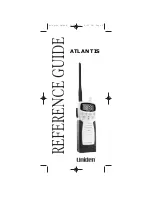
6
3
BATTERY PACKS AND CHARGING
■
Battery pack charging
The supplied* BP-198, BP-199 or BP-200
BATTERY PACK
in-
cludes rechargeable Ni-MH batteries and can be charged ap-
prox. 300 times. Charge the battery pack before first
operating the transceiver or when the battery pack becomes
exhausted.
*Optional for versions which come with the BP-197
BATTERY CASE
.
If you want to get the longest life out of your battery pack
(300+ charges), the following points should be observed:
1. Avoid overcharging. The charging period should be less
than 15 hours.
2. Use the battery until it becomes completely exhausted
under normal conditions. We recommend battery charging
just after transmitting becomes impossible.
■
Charging precautions
NEVER
attempt to charge alkaline batteries. This will cause
internal liquid leakage and damage the battery case and
transceiver.
NEVER
connect two or more chargers at the same time.
Charging may not occur under temperatures of 10°C (50°F)
or over temperatures of 40°C (104°F).
■
About battery packs
D
Operating period
Depending on attached battery pack, the operating period of
the transceiver varies. When the approx. voltage of battery
packs BP-198, BP-199 or BP-200 falls to 4, 5 or 8 V, respec-
tively, charging is necessary. Refer to p. 33 for operating pe-
riod details.
D
Battery life
If your battery pack seems to have no capacity even after
being fully charged, completely discharge it by leaving the
power ON overnight. Then fully charge the battery pack
again.
If the battery pack still does not retain a charge (or very little),
a new battery pack must be purchased.
☞
NOTE:
When using a battery pack for the first time or after
long periods of inactivity between charges (approx. 2
months or more), the battery pack will not be able to retain
a full charge immediately. Subsequent charge/discharge
cycles will eventually bring the battery pack up to full
charge capacity.
IC-T81A/E Manual-(1) 01.12.5 6:55 PM Page 6 (1,1)











































